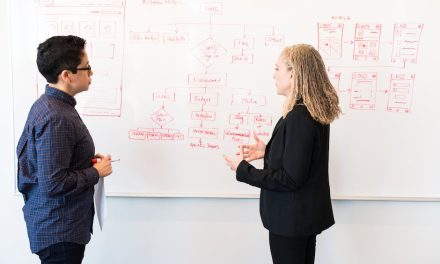Table of Contents
- Introduction
- The Importance of Community Engagement in Urban Revitalization
- Strategies for Sustainable Development in Urban Revitalization Projects
- Addressing Gentrification and Displacement in Urban Revitalization Efforts
- The Role of Technology in Transforming Urban Spaces for Revitalization
- Q&A
- Conclusion
Unlocking the Future: Exploring Key Questions for Urban Revitalization
Introduction
Urban revitalization is a critical process that aims to improve the economic, social, and environmental conditions of urban areas. As cities continue to face various challenges such as population growth, infrastructure decay, and social inequality, exploring key questions becomes essential to effectively address these issues. By identifying and understanding the underlying factors that contribute to urban decline, policymakers, urban planners, and community members can develop strategies and initiatives to revitalize and transform cities into vibrant, sustainable, and inclusive spaces. In this article, we will delve into some of the key questions that need to be explored in the context of urban revitalization, shedding light on the complexities and opportunities that arise in the pursuit of creating thriving urban environments.
The Importance of Community Engagement in Urban Revitalization

Urban revitalization is a complex and multifaceted process that aims to improve the quality of life in urban areas. It involves various strategies and initiatives to address the challenges faced by cities, such as deteriorating infrastructure, social inequality, and economic decline. One key aspect of urban revitalization that has gained increasing attention in recent years is community engagement. This article explores the importance of community engagement in urban revitalization and highlights some key questions that need to be addressed.
Community engagement plays a crucial role in urban revitalization for several reasons. First and foremost, it ensures that the voices and perspectives of local residents are heard and taken into account in the decision-making process. By involving the community in the planning and implementation of revitalization projects, it helps to build trust and foster a sense of ownership among residents. This, in turn, increases the likelihood of successful outcomes and sustainable change.
Furthermore, community engagement promotes social cohesion and inclusivity. It provides a platform for different stakeholders, including residents, businesses, and community organizations, to come together and collaborate towards a common goal. By creating opportunities for dialogue and collaboration, community engagement helps to bridge divides and build stronger, more resilient communities.
However, effective community engagement in urban revitalization is not without its challenges. One key question that needs to be addressed is how to ensure that the engagement process is inclusive and representative of the diverse voices within the community. It is essential to reach out to marginalized groups, such as low-income residents, ethnic minorities, and youth, who may face barriers to participation. This can be achieved through targeted outreach efforts, providing translation services, and creating accessible platforms for engagement.
Another important question is how to strike a balance between community input and expert knowledge. While community engagement is crucial, it is also important to recognize the expertise and technical knowledge of urban planners, architects, and other professionals. Finding ways to integrate community input with expert knowledge can lead to more informed and effective decision-making.
Additionally, the question of how to sustain community engagement over the long term is a critical consideration. Revitalization projects often span several years, and maintaining community involvement throughout the process can be challenging. It requires ongoing communication, transparency, and accountability from all stakeholders involved. Creating mechanisms for ongoing feedback and evaluation can help ensure that community engagement remains a central component of the revitalization process.
In conclusion, community engagement is a vital component of urban revitalization. It empowers local residents, promotes social cohesion, and enhances the overall effectiveness and sustainability of revitalization efforts. However, it is essential to address key questions related to inclusivity, balancing community input with expert knowledge, and sustaining engagement over the long term. By doing so, urban revitalization can become a truly collaborative and transformative process that benefits all members of the community.
Strategies for Sustainable Development in Urban Revitalization Projects
Urban revitalization is a critical aspect of sustainable development in cities around the world. As urban areas continue to grow and evolve, it becomes increasingly important to find strategies that promote sustainable development and improve the quality of life for residents. In this article, we will explore some key questions that need to be addressed when considering urban revitalization projects and discuss strategies that can be implemented to ensure sustainable development.
One of the first questions that needs to be asked when embarking on an urban revitalization project is: what are the goals and objectives of the project? It is essential to have a clear understanding of what the project aims to achieve in terms of economic, social, and environmental outcomes. This will help guide the decision-making process and ensure that the project is aligned with the overall vision for the city.
Another important question to consider is: what are the existing challenges and opportunities in the area? Understanding the current state of the urban environment is crucial for identifying areas that need improvement and potential opportunities for revitalization. This could include addressing issues such as deteriorating infrastructure, high crime rates, or lack of green spaces. By identifying these challenges and opportunities, urban planners can develop strategies that address the specific needs of the community.
One strategy that has proven to be effective in urban revitalization projects is the concept of mixed-use development. This approach involves integrating a variety of land uses, such as residential, commercial, and recreational, within a single area. By creating a diverse mix of activities, mixed-use developments can help create vibrant and livable communities. This strategy also promotes sustainable development by reducing the need for long commutes and encouraging walking, cycling, and the use of public transportation.
In addition to mixed-use development, another strategy that can be employed in urban revitalization projects is the preservation and adaptive reuse of historic buildings. Historic buildings often have unique architectural and cultural value, and by preserving them, cities can maintain their identity and sense of place. Adaptive reuse involves repurposing these buildings for new uses, such as converting an old factory into loft apartments or transforming a historic school into a community center. This strategy not only preserves the past but also contributes to the economic vitality of the area.
Furthermore, it is crucial to consider the social and environmental impacts of urban revitalization projects. Sustainable development requires a holistic approach that takes into account the well-being of both people and the planet. This means ensuring that the revitalization project promotes social equity, provides affordable housing options, and protects natural resources. It also involves engaging with the local community and involving them in the decision-making process to ensure that their needs and concerns are addressed.
In conclusion, urban revitalization is a complex process that requires careful planning and consideration of various factors. By asking key questions and implementing strategies for sustainable development, cities can create thriving and livable communities. Mixed-use development, preservation and adaptive reuse of historic buildings, and addressing social and environmental impacts are just a few strategies that can be employed in urban revitalization projects. Ultimately, the goal is to create cities that are economically prosperous, socially inclusive, and environmentally sustainable.
Addressing Gentrification and Displacement in Urban Revitalization Efforts
Exploring Key Questions for Urban Revitalization
Addressing Gentrification and Displacement in Urban Revitalization Efforts
Urban revitalization is a complex process that aims to improve the economic, social, and physical conditions of a city or neighborhood. While it is often seen as a positive force for change, it can also have unintended consequences, such as gentrification and displacement. These issues have become increasingly important as cities around the world grapple with the challenges of revitalizing their urban areas.
Gentrification, the process by which wealthier residents move into a neighborhood, often resulting in the displacement of lower-income residents, has been a topic of much debate and concern. On one hand, gentrification can bring new investment, improved infrastructure, and increased property values. On the other hand, it can lead to the loss of affordable housing, the displacement of long-time residents, and the erosion of community cohesion.
One key question that arises in the context of gentrification is how to strike a balance between revitalizing a neighborhood and preserving its character and affordability. It is important to ensure that the benefits of revitalization are shared by all residents, rather than being concentrated in the hands of a few. This requires careful planning and the implementation of policies that prioritize affordable housing, community development, and the protection of vulnerable populations.
Another important question is how to mitigate the negative impacts of gentrification on existing residents. Displacement, the forced relocation of individuals and families due to rising housing costs, is a significant concern in many revitalizing neighborhoods. To address this issue, cities must develop strategies to protect vulnerable populations, such as rent control, tenant protections, and the creation of affordable housing units. Additionally, efforts should be made to provide support and resources to those who are at risk of displacement, such as job training programs and financial assistance.
Furthermore, it is crucial to involve the community in the revitalization process. Engaging residents in decision-making and planning ensures that their voices are heard and their needs are taken into account. Community input can help shape revitalization efforts in a way that is sensitive to the unique characteristics and history of a neighborhood. This can help prevent the erasure of cultural heritage and the loss of social ties that often accompany gentrification.
In addition to addressing gentrification and displacement, urban revitalization efforts must also consider the broader social and economic impacts on the city as a whole. Revitalization can lead to increased property values and tax revenues, but it can also exacerbate inequality and create divisions between different segments of the population. It is important to carefully consider the potential consequences of revitalization and develop strategies to ensure that the benefits are shared equitably.
In conclusion, addressing gentrification and displacement is a crucial aspect of urban revitalization efforts. Striking a balance between revitalization and affordability, mitigating the negative impacts on existing residents, involving the community in decision-making, and considering the broader social and economic impacts are key questions that must be explored. By addressing these issues, cities can ensure that revitalization efforts are inclusive, sustainable, and beneficial for all residents.
The Role of Technology in Transforming Urban Spaces for Revitalization
Urban revitalization is a complex and multifaceted process that aims to breathe new life into deteriorating urban areas. It involves a range of strategies and interventions, from physical improvements to social and economic initiatives. In recent years, technology has emerged as a powerful tool in transforming urban spaces for revitalization. This article explores the role of technology in this process, focusing on key questions that arise when considering its potential impact.
One of the key questions surrounding the role of technology in urban revitalization is how it can be used to improve the physical infrastructure of cities. Smart city technologies, for example, can enhance the efficiency and sustainability of urban systems. By integrating sensors and data analytics, cities can optimize energy consumption, reduce waste, and improve transportation networks. These advancements not only make cities more environmentally friendly but also create a more attractive and livable environment for residents.
Another important question is how technology can be leveraged to address social and economic challenges in urban areas. In many cities, revitalization efforts are driven by a desire to reduce inequality and create opportunities for all residents. Technology can play a crucial role in achieving these goals. For instance, digital platforms and online marketplaces can connect local businesses with consumers, helping to stimulate economic growth and create jobs. Additionally, technology can facilitate access to education and healthcare services, particularly for underserved communities.
However, it is essential to consider the potential drawbacks and limitations of relying too heavily on technology in urban revitalization. One concern is the risk of exacerbating existing inequalities. While technology has the potential to create opportunities, it can also deepen the digital divide if not implemented inclusively. It is crucial to ensure that all residents, regardless of their socioeconomic status, have access to and can benefit from technological advancements.
Furthermore, there is a need to address privacy and security concerns associated with the use of technology in urban revitalization. As cities become more connected and data-driven, there is a growing need to protect personal information and ensure that technology is used ethically. Safeguards must be put in place to prevent misuse of data and to maintain public trust in the technology-driven revitalization process.
In addition to these questions, it is important to consider the role of community engagement in technology-driven urban revitalization. While technology can provide innovative solutions, it is essential to involve residents in the decision-making process. Engaging with the community ensures that their needs and concerns are taken into account, and that the revitalization efforts are truly inclusive and sustainable.
In conclusion, technology has the potential to play a transformative role in urban revitalization. From improving physical infrastructure to addressing social and economic challenges, technology offers innovative solutions to long-standing urban issues. However, it is crucial to approach its implementation with caution and consideration. By addressing key questions surrounding the role of technology, cities can harness its potential while ensuring that the revitalization process is equitable, secure, and community-driven.
Q&A
1. What are some key questions to consider when exploring urban revitalization?
– What are the main challenges and issues facing the urban area?
– What are the specific needs and priorities of the local community?
– How can existing resources and assets be leveraged for revitalization efforts?
– What strategies and approaches have been successful in other urban revitalization projects?
2. Why is it important to ask these questions?
– Asking these questions helps identify the root causes of urban decline and develop targeted solutions.
– Understanding the needs and priorities of the community ensures that revitalization efforts are tailored to their specific circumstances.
– Leveraging existing resources maximizes efficiency and minimizes costs.
– Learning from successful projects provides valuable insights and best practices for effective urban revitalization.
3. How can these questions be answered?
– Conducting comprehensive research and analysis of the urban area, including demographic data, economic indicators, and infrastructure assessments.
– Engaging with local stakeholders, such as residents, business owners, and community organizations, through surveys, interviews, and public meetings.
– Studying case studies and success stories from other urban revitalization projects.
– Collaborating with urban planning experts, economists, and social scientists to gain insights and expertise.
4. What are some potential outcomes of exploring these questions?
– Identification of specific strategies and interventions to address the challenges and issues facing the urban area.
– Development of a comprehensive revitalization plan that aligns with the needs and priorities of the community.
– Mobilization of resources and partnerships to implement the revitalization plan effectively.
– Improved quality of life for residents, increased economic opportunities, and a revitalized urban environment.
Conclusion
In conclusion, exploring key questions for urban revitalization is crucial for addressing the challenges and opportunities that cities face in terms of economic, social, and environmental sustainability. By asking questions about community engagement, infrastructure development, affordable housing, and sustainable transportation, among others, urban planners and policymakers can develop effective strategies to revitalize urban areas and improve the quality of life for residents. Additionally, considering the unique characteristics and needs of each city is essential for tailoring revitalization efforts to specific contexts. Overall, exploring key questions is a fundamental step in the process of urban revitalization and can lead to more inclusive, resilient, and vibrant cities.






Recent Comments